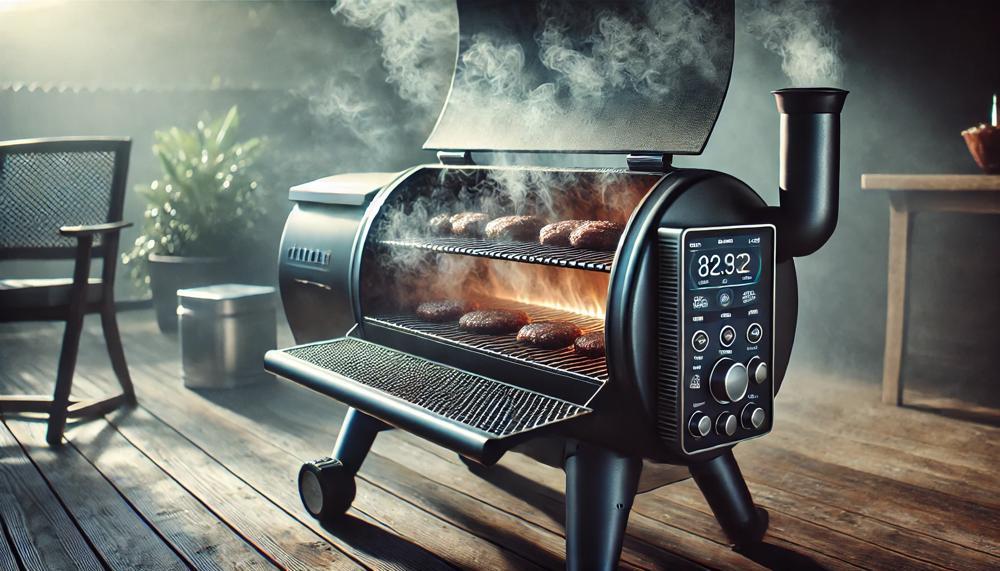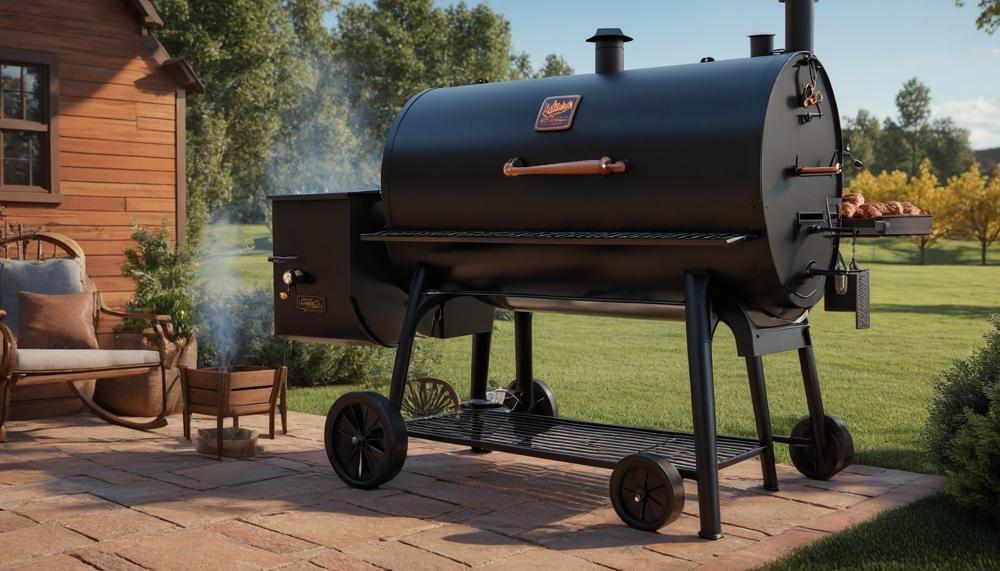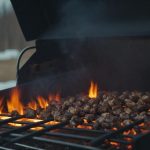Yes, your Traeger smoker can produce excessive smoke at high temperatures. This situation can be both perplexing and frustrating, especially when you expect a clean, efficient grilling experience. The reasons behind this issue are multifaceted, but understanding them can help you troubleshoot and maintain your grill effectively.
Your Traeger smoker is designed to insulate and hold heat efficiently, but when it runs too hot, it can lead to an excess of smoke. This might be due to a few factors, such as the type of pellets used, the cleanliness of the grill, or the way the temperature is regulated. Addressing these factors can help you achieve the perfect balance and enjoy a smoother cooking experience.
Key Takeaways:
- Pellet Quality: Using high-quality pellets ensures consistent burning and reduces excessive smoke.
- Cleanliness: Regularly clean your grill to prevent residue buildup that can cause smoking.
- Temperature Regulation: Properly manage and monitor your grill’s temperature to avoid overheating.
- Lid Management: If the grill runs too hot, opening the lid for 5 minutes can help cool it down.
- Troubleshooting: Understanding common issues and how to address them can significantly enhance your grilling results.
By keeping these points in mind, you can minimize excessive smoke and enjoy a better grilling experience with your Traeger smoker.
Contents
Why Is My Traeger Not Smoking? [Problems and Fixes]
Excessive smoke from your Traeger at high temperatures can be caused by several factors, each requiring specific actions to resolve:
| Potential Causes | Explanation | Fixes |
| Grease and Fat Buildup | Accumulated grease and fat on the heat deflector, drip tray, and other components can block airflow, causing excessive smoke. | Clean all components thoroughly, using a scraper or brush designed for Traeger grills to remove built-up grease and fat. |
| Low-Quality or Wet Pellets | Pellets that are damp or of low quality can produce more smoke than necessary. | Use high-quality, dry pellets. Store pellets in a dry place to prevent moisture absorption. |
| Malfunctioning Temperature Control System | A faulty temperature control system can cause inconsistent temperatures, leading to excessive smoke. | Contact Traeger customer support for troubleshooting or replacement parts if needed. |
| Change in Pellet Type | Different wood pellets produce varying smoke levels. Recent changes in pellet type may cause more smoke. | Experiment with different pellet blends to find one that produces the desired smoke level. |
How Do I Get More Smoke From My Traeger?
To increase the amount of smoke produced by your Traeger at high temperatures, consider these strategies:

- Use Hardwood Pellets: Opt for hardwood pellets such as hickory or mesquite. These pellets contain higher levels of lignin, an organic compound that generates more smoke when burned compared to fruit or nut-based pellets.
- Add a Smoke Tube or Box: Incorporate a smoke tube or box filled with wood chips or additional pellets. Placing this accessory inside your grill can significantly enhance the smoky flavour of your food.
- Adjust Temperature and Airflow: Maintain the grill temperature between 165-225°F for optimal smoke production. Also, slightly opening the lid or using a lower temperature setting can boost smoke output.
- Preheat Longer: Allow your Traeger to preheat for an extended period. This ensures the pellets are fully ignited and generate more smoke before you start cooking.
- Regular Cleaning: Ensure your grill is clean, particularly the firepot and drip tray. A clean grill promotes better air circulation and more efficient smoke production.
How Much Smoke Should Come out Of a Traeger?
The amount of smoke coming out of a Traeger grill varies significantly based on the temperature setting. At lower temperatures, typically between 165°F and 225°F, Traeger grills produce a substantial amount of smoke, ideal for imparting that rich, smoky flavour to your food. As the temperature increases, the smoke output naturally diminishes since the pellets combust more completely and efficiently at higher temperatures.
However, excess smoke at high temperatures (above 350°F) could signal underlying issues. Here’s a breakdown of potential causes and solutions:
| Temperature Range | Expected Smoke Output | Potential Causes of Excess Smoke |
| 165°F – 225°F | High smoke production (Desired for smoking) |
– Normal operation – Pellets burning at optimal rate |
| 225°F – 350°F | Moderate smoke production | – Slight ash buildup – Clean firepot regularly |
| Above 350°F | Low smoke production (High heat cooking) |
– Type of wood pellets – Ash buildup – Drip tray positioning – Malfunctioning temperature probe |
Causes of Excess Smoke at High Temperatures
Type of Wood Pellets
:
Different wood pellets produce varying smoke levels. Woods like hickory and mesquite generate more smoke, especially at high temperatures. Opt for milder woods like apple or cherry if excess smoke is a concern.
Ash Buildup
:
Ash from previous grilling sessions can accumulate in the firepot. When the grill heats up, this ash can be stirred, increasing smoke output. Regular cleaning of the firepot is essential to prevent this issue.
Drip Tray Placement
:
If the drip tray is too close to the firepot, grease can drip onto the hot coals, causing excess smoke. Ensure the drip tray is properly positioned to avoid this problem.
Temperature Probe Issues
:
A malfunctioning temperature probe can lead to inaccurate temperature readings, prompting the grill to produce more smoke in an attempt to maintain the set temperature. Check and replace the temperature probe if necessary.
Conclusion
Understanding why your Traeger smoker produces excessive smoke at high temperatures involves a few key factors. Firstly, the quality of pellets plays a significant role. High-quality pellets ensure a consistent burn, reducing unnecessary smoke. Regularly cleaning your grill is also crucial to prevent grease and ash buildup, which can block airflow and increase smoke production.
Another important aspect is temperature regulation. Managing and monitoring your grill’s temperature helps avoid overheating, which can lead to more smoke. If your grill runs too hot, opening the lid for a few minutes can help cool it down. Additionally, different types of wood pellets produce varying levels of smoke, so experimenting with different blends can help you find the right balance.
Malfunctioning components, like the temperature control system, can also cause excessive smoke. Ensuring all parts are functioning correctly and contacting customer support if needed can mitigate this issue.






